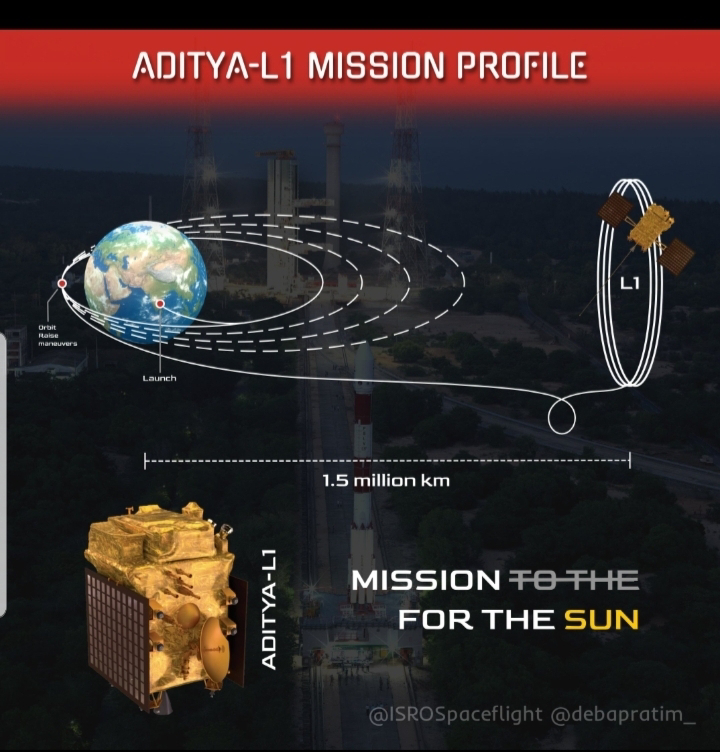Aditya L1 spacecraft will travel 1.5 million km from Earth over a period of four months to reach its destination.
India's first space-based solar observatory. Aditya-L1 Project which
Here comes an interesting point on the Mission Adithya
Aditya L1 spacecraft will travel 1.5 million km from Earth over a period of four months to reach its destination. All the best team ISRO for yet another successful mission. #AdityaL1
The #AdityaL1 spacecraft will work by using a variety of instruments to study the Sun. These instruments will include:
➖A coronagraph, which will block out the light from the Sun's disc so that the corona can be studied.
➖A spectrometer, which will measure the composition of the solar atmosphere.
➖A magnetometer, which will measure the magnetic field of the Sun.
➖A particle detector, which will measure the particles that are emitted by the Sun.
The Aditya L1 spacecraft will be placed in a halo orbit around the Sun-Earth Lagrange point L1, which is a point in space where the gravitational forces of the Sun and Earth balance each other out.
Here is a simplified explanation of how each of the instruments will work:
🚀Coronagraph: A coronagraph is a device that blocks out the light from the Sun's disc so that the corona can be studied. The corona is the outermost layer of the Sun's atmosphere, and it is much fainter than the disc. A coronagraph works by using a special optical system to block out the light from the disc.
🚀Spectrometer: A spectrometer is an instrument that separates light into its component wavelengths. This allows scientists to study the composition of the solar atmosphere. A spectrometer works by passing light through a prism or grating, which separates the light into its component wavelengths.
🚀Magnetometer: A magnetometer is an instrument that measures the magnetic field of the Sun. The magnetic field of the Sun is very important because it controls the behavior of the solar wind, which is a stream of charged particles that is emitted by the Sun. A magnetometer works by measuring the magnetic field lines that are present in the solar atmosphere.
🚀Particle detector: A particle detector is an instrument that measures the particles that are emitted by the Sun. These particles can include electrons, protons, and ions. A particle detector works by collecting the particles and measuring their energy and charge.
The ISRO had given a statement
We are hours away from the launch of Aditya-L1, India's first space-based solar observatory. 🇮🇳
It is also going to be ISRO's first mission to the L1 point!
That's right, unlike what you may have seen in the media, Aditya-L1 is NOT headed to the Sun. ☀️
Instead, it is going to a region in space called the Lagrange 1 or L1 point (that's why it is called Aditya-𝗟𝟭), which is only 1% of the distance to the Sun away from Earth!
Even then, it is roughly 15 lakh km away from the Earth, about 4 times the distance to the Moon! 🌖
The reason it is going to the L1 point is because at that distance, the gravity of the Earth and that of the Sun cancel each other out! This means the spacecraft won't have to orbit the Earth and can just sit in a "halo orbit" around the L1 point, allowing it to continuously observe the Sun!
#ISRO #AdityaL1 #PSLVC57


Comments